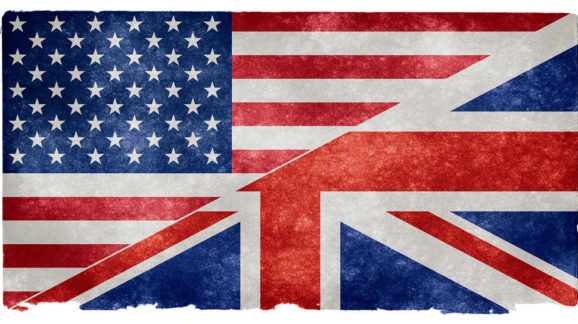Brexit Britain Provides Opportunity for New Style of U.S. Trade Agreement

 Despite its reliance on raising tariff barriers as a weapon in trade negotiation, the U.S. will soon have the opportunity to negotiate a new free trade deal based around some of the principles Ryan Young and I outline in our recent study “Traders of the Lost Ark.” Assuming it does not arrange to stay within the European Union’s customs union, the UK will regain full power to negotiate trade deals when it leaves the EU in March 2019. The administration should jump at the chance to create a new model for future trade deals.
Despite its reliance on raising tariff barriers as a weapon in trade negotiation, the U.S. will soon have the opportunity to negotiate a new free trade deal based around some of the principles Ryan Young and I outline in our recent study “Traders of the Lost Ark.” Assuming it does not arrange to stay within the European Union’s customs union, the UK will regain full power to negotiate trade deals when it leaves the EU in March 2019. The administration should jump at the chance to create a new model for future trade deals.
A trade deal with the UK would be popular in both countries. According to a recent opinion poll by British firm Public First conducted on both sides of the Atlantic, 67 percent of British respondents and 64 percent of Americans would support a free trade agreement between the two countries. Fewer than 10 percent of respondents in both countries opposed the idea of a free trade deal.
The poll also revealed no major concerns in either country about a deal. Perhaps amusingly to American eyes, 15 percent of British respondents were worried about “reduced food standards” (this is likely in response to scare stories in the British press about American chlorinated chicken). No concern registered over 10 percent among American respondents.
This means that the negotiators will have a much freer hand in reaching a deal than in the case of, say, the renegotiation of U.S.-Mexico trade terms in the NAFTA talks, where the stakes are high. In particular, both countries have very high labor and environmental standards. This means that there is no need for these non-trade-related issues to be included in the trade talks. That will shorten the length of any trade deal considerably.
As tariffs between the two countries are already very low, the trade deal will have little work to do in further reducing the remaining tariffs (many of which are imposed by the EU’s common external tariff, which is particularly high for agricultural goods and cars). Trade in services between the two countries can be expedited by specific service agreements, such as one on financial services, which will be very important in providing new sources of access to capital for U.S. businesses and consumers, given the strength of the UK’s financial services sector.
Moreover, as already noted, the two countries have very similar regulatory standards. This means that the trade agreement can proceed on the basis of mutual recognition. In a mutual recognition agreement, each party recognizes that the outcomes of the regulatory system of the other party are equivalent, and therefore allows the sale of goods or services under either regulatory system within its jurisdiction. There is more on mutual recognition and its success in the trading relationship between Australia and New Zealand in our study. Moreover, mutual recognition can result in regulatory competition, providing better options for regulated businesses and consumers.
Once such a deal is concluded, moreover, it can provide a model for other trade agreements. It could even be negotiated with an accession clause, allowing more countries to join under the same terms. This is likely to prove attractive to Canada, Australia, and New Zealand, but also to countries like Iceland and Norway, and perhaps Chile and other members of the Trans-Pacific Partnership. As such, it could form the kernel of a new Global Free Trade Alliance. That holds the potential to transform world trade very much for the better.
CEI has partnered with the Initiative for Free Trade in its project to produce a draft “ideal” U.S.-UK free trade agreement. The draft will be launched soon in both the UK and U.S.